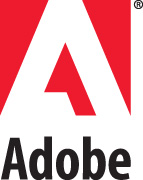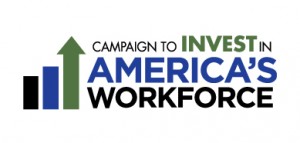
 Jana Hambruch, an Industry Advisor who provides consulting services for Adobe Systems Incorporated, has more than 18 years of technical certification industry experience in the secondary, postsecondary, and workforce education markets.
Jana Hambruch, an Industry Advisor who provides consulting services for Adobe Systems Incorporated, has more than 18 years of technical certification industry experience in the secondary, postsecondary, and workforce education markets.
For years, educators have been driven to produce “college ready†students through secondary education programs. Yet today, 41% of matriculated high school students do not pursue postsecondary education.[1]  Of the ones who do, less than half actually graduate.[2] These students need to be taught marketable 21st century skills at the secondary level.[3] Â
Some existing Career Technical Education (CTE) programs remain centered on vocational skills that were important in the past but find little traction in today’s digital technology driven market. In order to overcome the challenges our nation faces, our workforce must be highly competitive in the global market, and it must remain the leading innovator in the high-tech industries and occupations that dominate our global economy. In order to accomplish this, our education system must adapt to these new demands.
America’s workforce is aging.  Fifty percent of our workforce [3] is close to retirement age, and others lack the skills necessary to truly compete in today’s market. The generation of future workers who are entering high school now will be expected to use technology at the beginning of their careers, in many cases technology that does not even exist today. How do we prepare these students to meet these challenges and take the reins of a digital economy?
Well, to begin with, educators must recognize the paradigm shift from “College Ready for Some†to “Career Ready for Allâ€.
CTE is more important now than ever.
- Future employees must have cognitive/critical thinking skills to compete in technology driven markets
- Survival – adaptive academic skills are imperative, as individuals must stay current and continue training in technology
To prepare secondary students to be “Career Readyâ€, we need to look at what employable and marketable skill sets all students need foundationally to succeed regardless of the profession they desire to be in. These include …
- Digital Literacy,
- Fluency in Creative and Technical Skill Sets, and
- Critical Thinking Skills.
To meet this challenge, educators themselves have begun using a variety of technology based education tools and methods. These include virtual learning environments, blended learning environments, web-based technologies such as blogs, streaming media, social networks and more.
The majority of students who enroll in modern CTE programs that incorporate these learning styles and include a measureable result with an industry certification (Intro to IT, Web Design, Web Development, Digital Design, Gaming Design, TV Production, and Digital Media) are staying in school, graduating, and performing better on state standardized exams. These courses include digital design applications such as Adobe Photoshop, Flash, Dreamweaver, Illustrator and Premiere Pro which are engaging and provide a true visual learning
experience that attracts all students. They focus on cognitive and critical thinking skills as a core element of the learning process.
What do the district and school gain?
- Increase in graduation rate
- Increase in student academic achievement across common core
- Increase in state standardized test scores
- Increase in enrollment
- Return on investment and measureable result: industry certification
Adobe has made tremendous strides in providing free online curriculum, teacher and student resources and a nationally recognized industry certification. The industry certification the students achieve is a credential that employers recognize, one which quantifies the skills of the worker and sets them apart. As a result, students entering the workforce have a much better opportunity to earn a livable wage, either while beginning their postsecondary studies or embarking on their career.
More information about the resources available through Adobe can be found online at http://www.adobe.com/education/k12/career-technical-education.edu.html. Programs of Study are also available for the Information Technology Career Clusterâ„¢ at http://www.careertech.org/career-clusters/resources/plans/it.html.
Companies like Adobe have made great strides to understand the value of Career Ready for All!
The Friends of CTE Guest Blog Series  provides advocates – from business and industry, researchers and organizations – an opportunity to articulate their support for Career Technical Education. The monthly series features a guest blogger who provides their perspective on and experience with CTE as it relates to policy, the economy and education.
Are you interested in being a guest blogger and expressing your support for CTE? Contact Melinda Findley Lloyd, Communications Consultant, at [email protected].
[1] Harvard Graduate School of Education, “Pathways To Prosperityâ€, Harvard University,
2011. Web, 12/01/2011. http://www.gse.harvard.edu/news_events/features/2011/Pathways_to_Prosperity_Feb2011.pdf
[2] Bowler,Mike. “Dropouts Loom Large For Schoolsâ€. U.S. News and World Report. 2009. Web. 12/01/2011. http://www.usnews.com/education/articles/2009/08/19/dropouts-loom-large-for-schools
[3] Sturko Grossman,Cheryl. “Preparing WIA Youth for the STEM Workforceâ€. Youthwork Information Brief. Ohio Department of Job and Family Services, Office of Workforce Development, Bureau of Workforce Services. 2008. Web. 12/01/2011. http://jfs.ohio.gov/owd/WorkforceProf/Youth/Docs/Infobrief35_STEM_Workforce_.pdf






